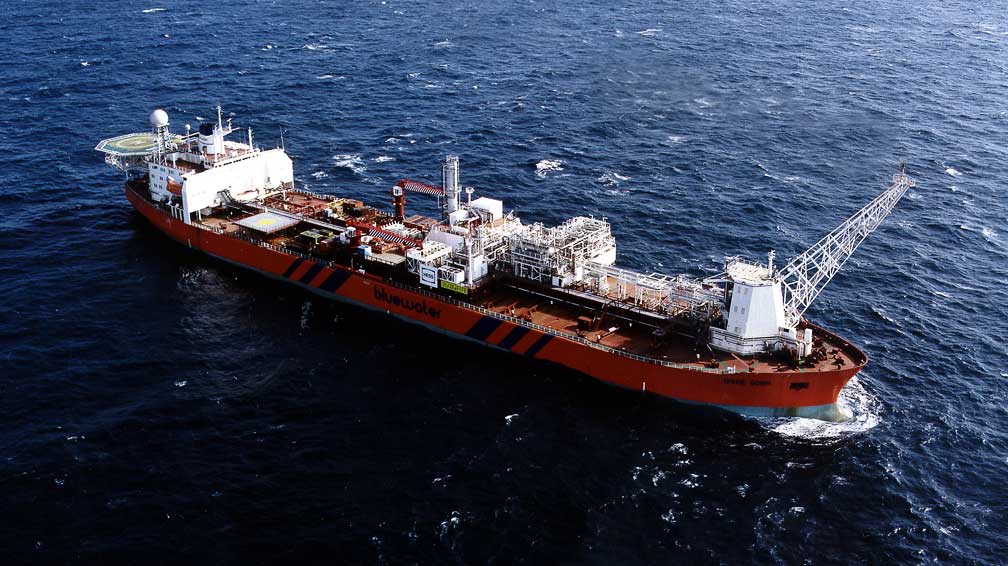
Goal is to decommission the wells so they remain secure safe and secure
It has been more than four years since oil last flowed from the Fife, Fergus, Flora and Angus (FFFA) fields in the North Sea. Now a Hess Exploration and Production team in Scotland is handling the challenging task of decommissioning the wells in the four fields on the U.K. Continental Shelf, about 205 miles southeast of Aberdeen.
Click here to read the FFFA Decommissioning Programmes Close-Out Report. Click here to read the IVRR Decommissioning Programme Close-Out Report.
Decommissioning involves taking offshore oil rigs out of service and securing the oil wells. It’s a complex process that includes removing the facilities and all the sub-sea structures affiliated with them.
These Hess-operated fields collectively produced more than 100 million barrels of oil between 1991 and 2008, but now the development has come to the end of its commercial life. In early 2012 U.K. authorities approved a $550 million (£350 million) decommissioning program that involves the recovery of more than 7,000 tons of steel and concrete.
Hess holds an 85 percent stake in Fife, Flora and Angus and a 65 percent share in Fergus. U.K.-based Premier Oil holds the remaining interest.
We are committed to doing the right thing as we decommission the wells with a focus on safety and the environment. We plan to leave the seabed in the same condition as we found it by securely closing off our wells and removing the infrastructure, ensuring there are no residual hazards to the environment or other sea users.
Our approach prioritizes reuse of the material we recover during the decommissioning process. Where this is not viable we look at options to recycle it. If neither is possible, we responsibly dispose of the remaining recovered material and infrastructure.
When production stopped in 2008, the Floating Production Storage and Offloading (FPSO) vessel was removed and the oil wells were tested and temporarily secured. Full project execution began once the decommissioning program was approved. The first stage is to abandon the subsea wells. This is done using a semi-submersible rig and is phased in over several years. Finally, all remaining FPSO and seabed infrastructure, including moorings, risers, pipelines and midwater hazards, will be removed.
The decommissioning team has remained engaged with a large number of stakeholders, including U.K. government bodies, English and Scottish fishery organizations and other non-government organizations (NGOs). In fact, throughout the management of the process the stakeholders have been active participants in all aspects of the project, including those involving the environment and safety.
Following the decommissioning program approval, the team began removing and permanently isolating the oil wells – a process that coincided with an agreement between Hess and its partner Premier Oil that there were no apparent viable opportunities to extend field life.
Under the Oslo/Paris Convention for the Protection of the Marine Environment of the North-East Atlantic (OSPAR), everything placed on the seabed to develop the four fields must be removed and the seabed returned to its original condition. Legislative guidelines stipulate nothing should be left on the seabed unless there is a compelling safety reason or if removing it would potentially harm the environment more than leaving it.
In addition to the Oslo/Paris Convention, Hess is following new decommissioning guidelines issued recently by Oil & Gas U.K., the leading representative body for the U.K. offshore oil and gas industry. The guidelines are intended to help well operators better understand and achieve the goals set by law in the U.K. The decommissioning team not only plans to meet or exceed the guidelines but is also actively sharing best practices and insights with other operators and industry bodies.
As part of this approach, a number of seabed surveys and ongoing Environmental Impact Assessments throughout various stages of the project are being conducted. In addition, we have engaged an on-site vessel to stand guard at the site at all times to monitor the remaining equipment and warn other vessels to stay clear until equipment that could impede their safety has been removed.
These wells are all on the seabed and not accessible other than by remote operations from a light-well intervention vessel or a floating semi-submersible vessel. Much of the theoretical planning for the decommissioning cannot be proved or disproved until activity starts inside the well. Managing one of the largest subsea development decommissioning projects in the history of the U.K. oil and gas industry requires the application of new technology and techniques. It is a big responsibility with significant challenges along the way.
But the Hess team is nimble, adaptable and well prepared. We remain committed to protecting the environment and ensuring the safety of everyone involved.